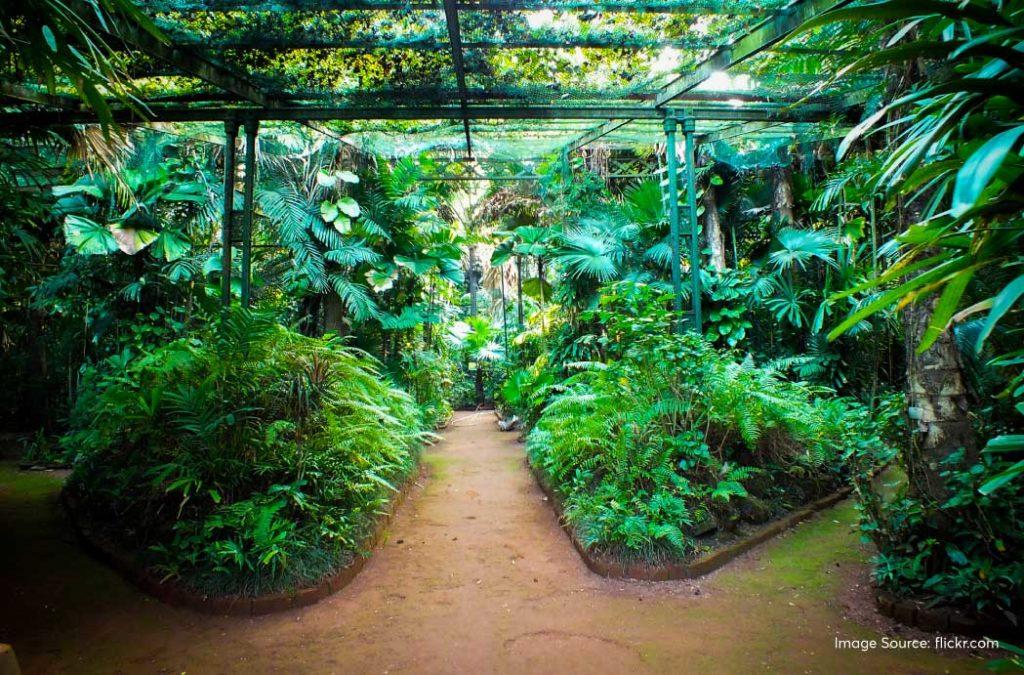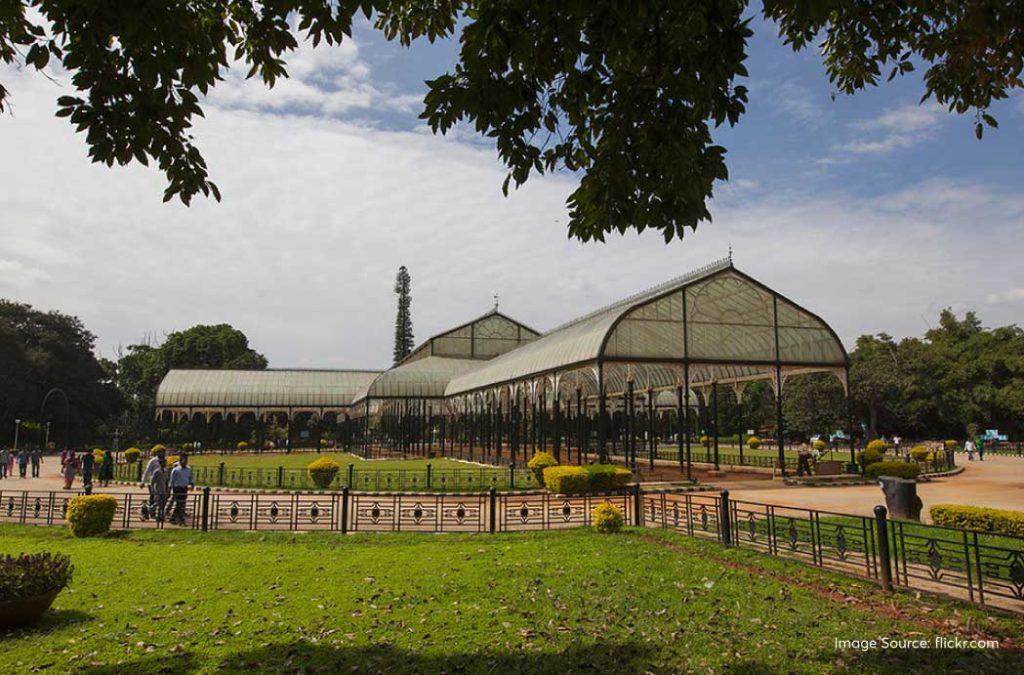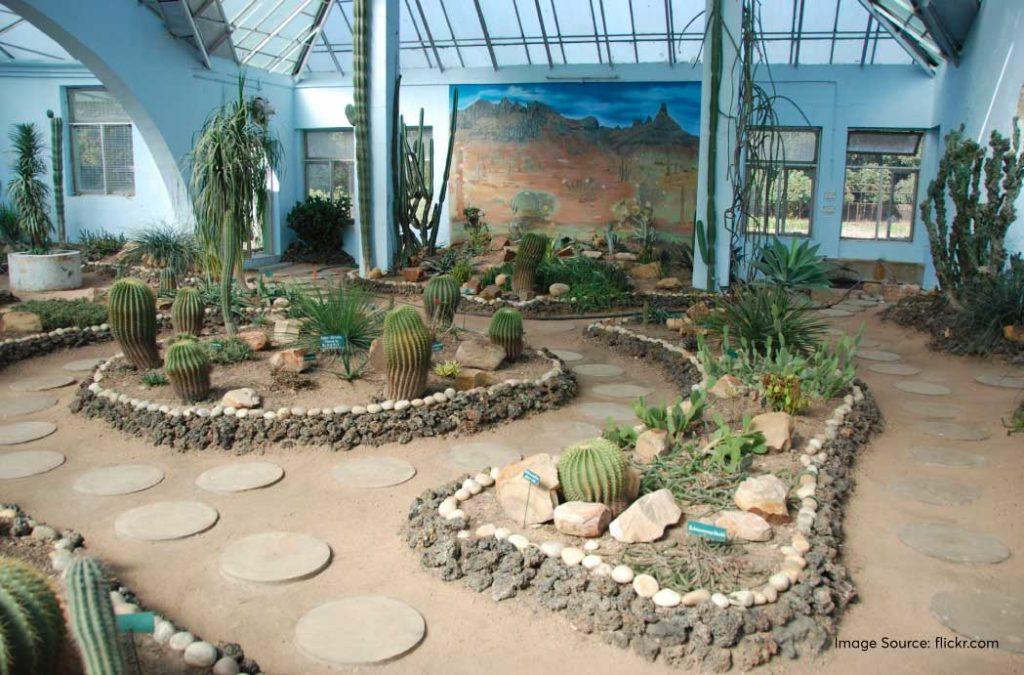12 Botanical Gardens in India: A Guide to India's Rich Biodiversity
Botanical gardens in India are exquisite sanctuaries that showcase the country’s rich biodiversity and natural wonders. These enchanting spaces are meticulously curated to preserve and display a vast array of plant species, offering visitors an immersive experience in the world of flora. From the lush greenery of towering trees to the vibrant colours of blooming flowers, each botanical garden provides a serene haven for nature enthusiasts, researchers, and tourists alike.

So come along with us as we set off on a wonderful adventure to discover the botanical gardens in India. Let’s soak in the panorama of hues, scents, and tranquillity that these natural oases have to offer. Prepare to be astounded by the incredible diversity and natural wonders that abound behind the walls of these magnificent botanical gardens in India.
Discovering Botanical Gardens in India
1. Acharya Jagadish Chandra Bose Indian Botanic Garden, Howrah
Located in Sibpur, Howrah, the Acharya Jagadish Chandra (AJC) Bose Indian Botanic Garden is a haven of natural beauty and scientific exploration. As one of India’s oldest and largest botanic garden, this wonderful world of greenery was established in 1787 and spans over 270 acres. It is home to a remarkable collection of flora and fauna. The garden is famous for its magnificent giant Amazon water lilies, whose floating leaves can reach up to six feet in diameter. The garden is also home to a magnificent and colossal banyan tree, famously referred to as the Great Banyan Tree, which has stood for over 250 years.

The garden features picturesque pathways, surrounded by lush greenery and a myriad of vibrant flowers, which visitors can use to stroll through. The Acharya Jagadish Chandra Bose Indian Botanic Garden also plays a crucial role in conservation efforts, housing rare and endangered plant species. Educational programs and workshops are organized to promote environmental awareness. Whether you’re a nature enthusiast, a researcher, or simply seeking a peaceful retreat, this botanical garden offers a captivating and enriching experience for all.
If you’re looking for hotels in Kolkata, here is a quick list to help you out.
- How to reach AJC Bose Indian Botanic Garden?
The AJC Bose Botanic Garden is a famous landmark within the Kolkata Metropolitan Development Authority (KMDA) and can be reached quite easily from either Kolkata or Howrah. Direct buses to and from the Botanic Garden run on many routes within both cities. Alternatively, any bus that goes in the direction of Sibpur can be taken to get you close to the garden, after which several taxi options exist. The largest railway station closest to the garden is Howrah Railway Station located 8 km away. The garden can also be reached from Santragachi (5 km) and Shalimar railway stations (1.9 km). The closest airport is the Dum Dum International Airport in Kolkata located 28 km away from this Botanical garden in Kolkata.
2. Lal Bagh Botanical Garden, Bengaluru
One of Bengaluru’s major attractions, the Lal Bagh Botanical Garden, is a magnificent oasis that showcases the city’s natural splendour. Dating back to the 18th century, this historic garden sprawls across 240 acres and is renowned for its stunning collection of flora and captivating landscapes. One of the highlights of this botanical garden is a beautiful glass house which has been modelled around the Crystal Palace in London. The glasshouse hosts vibrant floral shows throughout the year, including the famous biannual flower show. The southern part of the garden houses a large lake as well.

Visitors can wander through the garden’s well-manicured pathways and marvel at its diverse plant species, including towering trees, fragrant roses, and exotic orchids. The garden also hosts several events throughout the year, including flower shows during the country’s Independence and Republic days. Lal Bagh also houses several fascinating monuments and structures, such as the Kempegowda Tower, which offers panoramic views of the garden and the city beyond. Whether you’re a nature lover, a photography enthusiast, or simply seeking a serene escape from the bustling city, Lal Bagh Botanical Garden is a must-visit destination that promises a delightful and rejuvenating experience.
Here is a list of hotels in Bangalore if you are looking for overnight accommodation.
- How to reach Lal Bagh Botanical Garden?
Lal Bagh Botanical Garden in Bengaluru is a popular destination, and there are several ways to reach it. The nearest metro station to Lal Bagh is the Lalbagh Metro Station (0.20 Km) on the Green Line which stops right at the main gate of this Botanical garden. Bengaluru also has an extensive bus network. You can check local bus routes and take a bus to Lal Bagh or nearby bus stops like Lalbagh Main Gate (0.10 Km) or Double Road, which are within walking distance of the garden.
3. Government Botanical Garden, Ooty
Nestled amidst the scenic Nilgiri hills, Ooty is a place of wonder. Tourists from all around the world flock there to relax and bask in the glory of the many natural wonders and cultural treasures that abound. The Government Botanical Garden in Ooty is one such mesmerizing retreat for nature enthusiasts and avid garden lovers. Although not as large as some of the other gardens mentioned in the post, this sprawling garden, established in the mid-19th century, covers over 55 acres and showcases a remarkable variety of plant species from all around the world. The garden’s well-maintained pathways lead visitors through lush green lawns, vibrant flower beds, and handselected themed gardens.

One of the highlights of the Government Botanical Garden is the stunning collection of rare and exotic plants, including vibrant orchids, aromatic spices, and towering eucalyptus trees. The garden also features a picturesque lake, adding to its tranquil charm. Each year, the garden hosts the highly anticipated flower show, attracting visitors with its breathtaking displays of vibrant blooms and creative arrangements. The Government Botanical Garden in Ooty is a delightful destination that offers a captivating experience for all who visit.
Ooty has an abundance of beautiful hotels. Here is a list of hotels in Ooty for easy accessibility.
- How to reach Government Botanical Garden in Ooty?
Being a well-known tourist destination makes reaching the botanical garden in Ooty quite easy once you’re in Ooty. The closest major railway station to Ooty is Mettupalayam Railway Station, which is about 52 kilometres away. From there, you can take the Nilgiri Mountain Railway (toy train) that connects Mettupalayam to Ooty. It is a scenic and popular way to reach Ooty. Alternatively, taxis or buses can be availed. Ooty is well-connected by road to nearby cities like Coimbatore, Mysore, and Bangalore. You can reach Ooty by state-run buses, private buses, or by hiring a taxi.
Looking for further information and details about Ooty, here is all the info you need on the best time to visit Ooty.
4. Lloyd’s Botanical Garden, Darjeeling
Well known for its serene ambiance and picturesque setting amidst the scenic hills of Darjeeling, Lloyd’s Botanical Garden is a charming sanctuary that celebrates the region’s natural beauty. While relatively smaller in size compared to other botanical gardens in India, Lloyd’s Botanical Garden offers a delightful retreat with its lush greenery, colourful flower beds, and well-maintained pathways.

The garden provides an opportunity to admire a variety of plant species, including indigenous Himalayan flora and exotic flowers. Visitors can take leisurely walks, enjoy panoramic views, and relax amidst the tranquillity that the garden offers.
- How to reach Lloyd’s Botanical Garden, Darjeeling?
Lloyd’s Botanical Garden is located at a distance of about 1 Km from Darjeeling Himalayan Railway Station, which is a toy train station. The nearest airport to Darjeeling is Bagdogra Airport, located about 70 kilometres away. The closest major railway station to Darjeeling is New Jalpaiguri Railway Station (NJP), located approximately 70 kilometres away. Taxis or public transportation can be easily availed from both locations.
5. TNAU Botanical Gardens, Coimbatore
An important educational and research centre, the Tamil Nadu Agricultural University (TNAU) Botanical Gardens in Coimbatore is a haven for plant lovers. The TNAU Botanical Gardens boast a diverse collection of plant species over its vast area, showcasing the rich botanical heritage of the region. Visitors can explore the gardens and witness a wide array of trees, shrubs, flowering plants, and medicinal herbs. The gardens serve as a living classroom for students, providing hands-on learning opportunities in horticulture, plant breeding, and research.
The Botanical Survey of India exhibits unwavering dedication in its mission to safeguard and preserve the treasured Botanical Gardens in India. Through relentless efforts, they uphold their commitment to nurturing these invaluable natural sanctuaries for the benefit of current and future generations.

In addition to its educational significance, the TNAU Botanical Gardens offer a tranquil retreat for nature enthusiasts, with well-manicured lawns, walkways, and seating areas. The gardens also host various events, exhibitions, and workshops to promote awareness about plants, sustainable farming practices, and environmental conservation.
If you are looking for budget accomodations, Treebo has a great list of hotels in Coimbatore to make sure you have a comfortable stay.
- How to reach TNAU Botanical Gardens?
The TNAU Botanical Gardens are located within the campus of the Tamil Nadu Agricultural University (TNAU) on Marudhamalai Road in Coimbatore. The city sports a well-connected road network with various public transportation options that can take you to the garden.The Coimbatore Railway station is a mere 5 km away from the botanical garden.
6. National Botanical Research Institute Botanic Garden, Lucknow
The National Botanical Research Institute in Lucknow is a paradise for flower and plant enthusiasts, as well as those interested in floral crafts. Established in 1978, the institute offers a splendid garden spanning 25 hectares, along with a herbarium, two well-equipped laboratories, and an extensive library. Notably, the garden includes the renowned Sikandar Bagh, a popular tourist attraction in Lucknow. Recognized as one of the largest botanical gardens in India, the institute aims to study, propagate, conserve, and safeguard a wide variety of native plant species found across the country. A visit to this remarkable institution promises an exciting and educational experience, immersing visitors in the captivating world of plants and their conservation.

Also, If You Are Lucknow for a Few More Days, Do Check Out These 12 Historical Places in Lucknow Will Make the Mughal Era Come Alive
After a day well spent in soaking in the culture and heritage, here is a list of hotels in Lucknow you can choose from to spend the night.
- How to reach National Botanical Research Institute Botanic Garden, Lucknow?
The garden is located approximately 25 kilometres from the nearest airport, which is the Chaudhary Charan Singh International Airport. Lucknow is well-connected by rail, and the city has two major railway stations: Lucknow Junction (also known as Charbagh Railway Station) and Lucknow City Railway Station. From either station, you can hire a taxi or take a local bus to reach the NBRI Botanic Garden. While the former is 13 km away, the latter is is just 4.2 km away. You can use local transportation options like taxis, auto-rickshaws, or buses to reach the NBRI Botanic Garden.
Botanical gardens in India serve as living classrooms that promote a greater awareness of the natural world, not merely places for pleasant strolls. They support environmental education, provide a platform for botanical study and aid in the preservation of threatened and endangered species.
We have the privilege of experiencing these botanical gardens in India as visitors, taking in their serenity and finding comfort within their lush surroundings. Let’s treat these botanical gardens with respect, go on sensible vacations, and try to have as little of an influence as possible on the fragile ecosystems they support. Let’s acknowledge our deep connection to nature and appreciate the breathtaking beauty of botanical gardens in India together.












